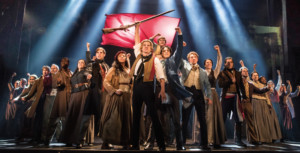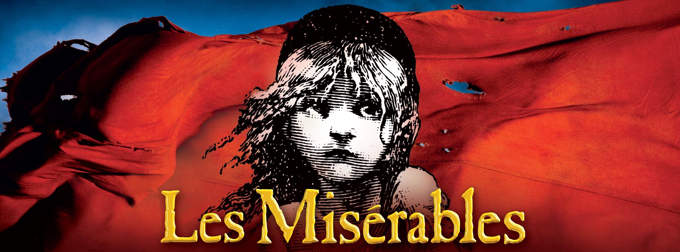Review: No Empty Chairs at Opening Night of LES MISERABLES in Sioux Falls

The company of LES MISÉRABLES kicked off a five-night run in Sioux Falls Wednesday night to a full house of patrons excited to see one of the most beloved shows in theater. LES MISÉRABLES tells the story of redemption, love, and sacrifice in 19th century France as reformed prisoner Jean Valjean (Nick Cartel) works to make himself into a new man after serving nineteen years in jail under the watchful eye of Inspector Javert (Josh Davis).
The show is based on the 1862 novel of the same name by Victor Hugo, with book and music by Claude-Michel Schonberg and lyrics by Herbert Kretzmer. LES MISÉRABLES has run continuously since it opened in London in 1985 - making it the longest running musical in the West End. When the show opened on Broadway two years later in 1987, it took home eight Tony Awards, including Best Musical and Best Original Score. After sixteen years, the original run closed on Broadway in 2003 - making it the 5th longest running Broadway show in history. The show has since been revived twice on Broadway and was made into a major motion picture in 2012 film.
This is a show for the ages that is known not only for its superb story but also for its timeless music. In a show that is completely sung through, the music carries a lot of weight in making sure the story is told as intended. From the first belting brass of the "Prologue," audiences know that they are in for a show filled with remarkable and unforgettable music by a talented orchestra. One of my favorite things about this score is how different musical motifs are brought back at different points in the show. This element creates a parallel between moments that alludes to there being a connection between the scenes in terms of tone or significance to the character. The score also plays a crucial role in highlighting the different levels of tense and light moments in the show; creating a nice contrast to balance out the show. Filled with songs everyone knows and love, including "I Dreamed A Dream," "On My Own," "Bring Him Home," "One Day More," and "Castle on a Cloud" the show is filled with music you won't forget and will be singing as you leave the theater.
One of the most captivating elements of this production for me was how Matt Kinley's set design and Paule Constable's lighting design worked together to paint a picture of 19th century France. Knowing that the scenery was inspired by paintings by Victor Hugo, there was an immediate connection made between the tones of the set and how the lighting design accentuated this in the use of various tones and lighting levels to create a picturesque staging. General lighting throughout the show is relatively dark, with strategic use of warm and cool light tones to convey different moments and a painted on like feel; as if you were to take a still photo it could easily of been a still painting from that time.
There are several moments throughout the show where Constable employs a bright white light to backlight a character and emphasize a critical moment to their development. Lighting was notably impactful during "Soliloquy," "The People's Song," and during the battle scene at the barricade during Act 2 with its use of shadow play and conveyance of movement.
Speaking of movement, the show constantly goes back and forth between loud and chaotic scenes filled with people to more subdued and still moments that create great contrast in understanding the shows story. Just as the score does a great job at supporting these contrasting moments of energy, the lighting does so as well in equal measure in the more generalized warm light used during the larger scenes and the cooler toned spotlight used during the more reflective and emotional solo moments.
The set design also utilized digital projections that were most effectively used as Jean Valjean drags Marius (Joshua Grosso) through the underground tunnels to safety, the movement of the projection allows you to immerse yourself in the pipe system and move along with the pair of men.
All of these technical elements support a story told by a talented cast of performers who bring life to these classic characters. Kelsey Denae does a wonderful job as Fantine, most notably for the vulnerability she brings to "I Dreamed a Dream" during Act 1. Josh Davis as Javert has a voice that is perfect for the commanding official, one that is best showcased during "Stars" and the perfectly executed final crescendo that makes your heart stop. Lightening things up is the fan favorite role of the Innkeeper and his wife, J. Anthony Crane and Allison Guinn bring the laughs to these roles in easily the funniest number in the show "Master of the House."
It would be wrong not to mention the strong ensemble cast in this production. From the beginning of "At the End of the Day" through to the "Finale" the company is tight and in sync with each other, never faltering in creation of ensemble scenes. One of the most powerful scenes in showcasing this synchronicity is at the barricade during the Act 1 closer "One Day More" as everyone takes the stage and marches towards the fight with laser focus as the large red flag flies behind them.
Thankfully you have more than one day to catch the remaining performances of this spectacular show. LES MISÉRABLES runs through Sunday June 16th - with special discount tickets in honor of Pride Week for the Sunday shows using the promo code PRIDE. You can get tickets through The Washington Pavilion, here.
Photo Credit: Matthew Murphy
Comments

Videos

